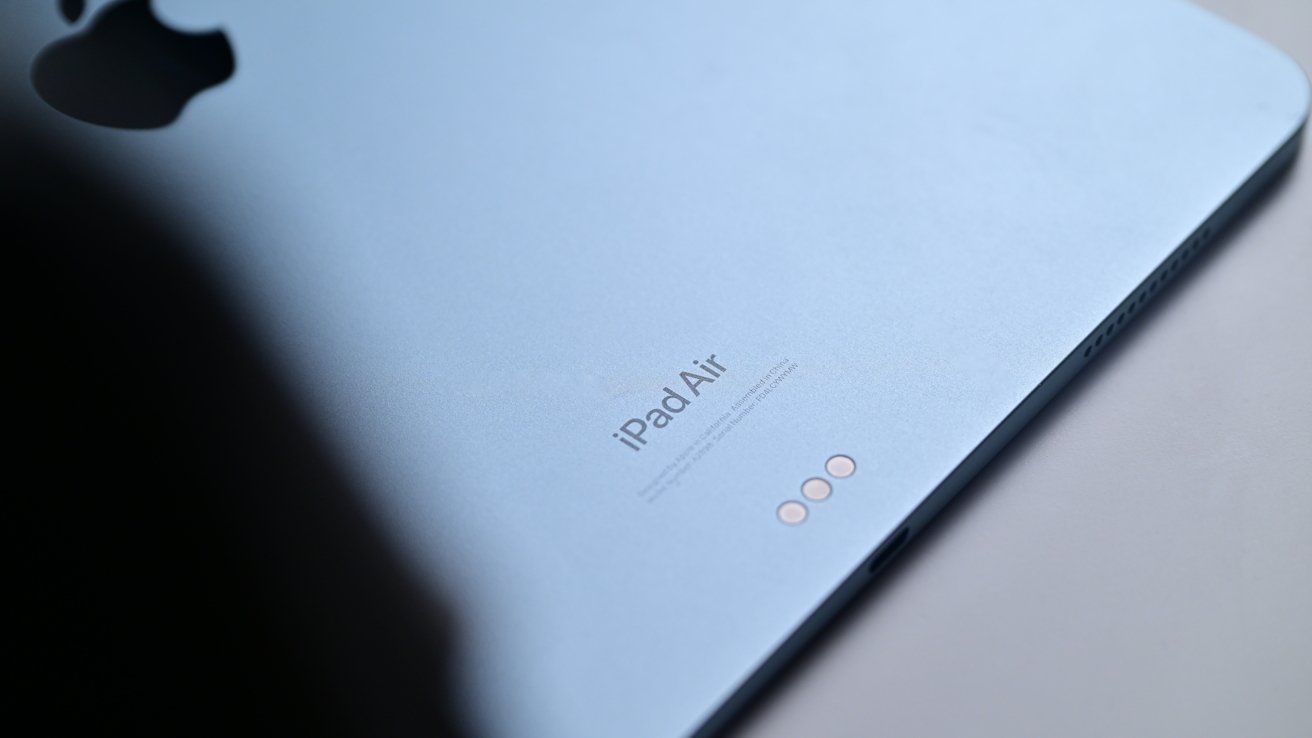
It’s the start of a new year, and expectations are high for a rumored iPad and iPad Air refresh in Apple’s first batch of product updates. Here’s what has been rumored so far.
Following after the end of 2024, the attention on Apple turns to its next product launches. Strong candidates among the group due to be updated are the iPad and the iPad Air, representing the budget and mid-range tablets in Apple’s catalog.
Apple last updated the iPad to the current tenth-generation model in October 2022, making it over two years since it was most recently refreshed. That makes the model prime to be updated soon.
Following the 2023 iPad drought, Apple last made changes to the iPad Air in May 2024. As well as updating to the M2 chip, Apple also introduced a 13-inch model alongside the existing 11-inch version, mimicking the iPad Pro lineup.
Of the two, the iPad is the most likely to be given some form of update sooner rather than later, simply because it hasn’t been updated in so long. However, it’s also entirely plausible for the iPad Air to get a bump soon too.
Apple has been known to release some of its products just under a year after the previous update, with the 2020 MacBook Pro’s six-month gap being the biggest example. It’s entirely possible for the same to be done to the iPad Air.
Here’s what has been rumored about the two models, and what you can expect from whatever Apple announces for each of the budget-friendly tablets.
iPad and iPad Air: Scheduling
While favorites for an update, there’s no firm date set for either the iPad or iPad Air to be introduced. What is rumored is that it will be early in 2025.
A report from October 2024 claimed a new entry-level iPad will be arriving in the spring of 2025. At the time, it was thought that it was likely to be accompanied by the iPad Air, among other products.
On January 7, another report doubled down on the timeline, with an April launch expected. It arrived at a time when more doubtful rumors claimed a January launch was a possibility, despite Apple’s tendency to hold its major launches a few months into the year.
A third report just five days later on January 12 proposed that the launch timing could be in March or April.
Even so, it’s still possible for Apple to hold the iPad Air for a later update. With its last update in May of 2024, it could easily wait until May 2025 for its next release.
iPad and iPad Air: Design isn’t expected to change
Each Apple launch brings with it the tantalizing prospect of major updates being made to its products. However, for the iPad and iPad Air, there’s probably not going to be much happening here.
Apple likes to retain the use of a hardware design for multiple generations. If the designs for models is relatively new, it will tend to reuse them for the next generation.
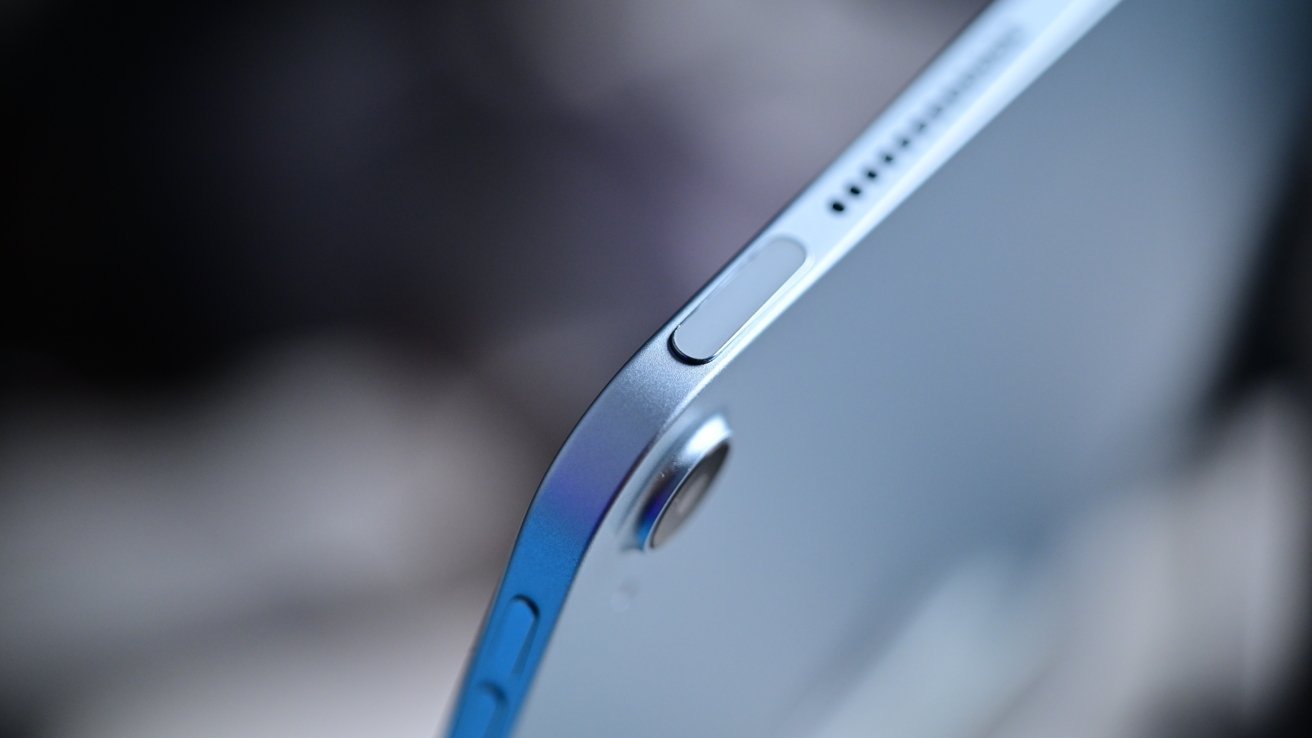 Touch ID on the iPad Air
Touch ID on the iPad Air
For the iPad, the current tenth-gen model is the first of a new design. This considerably shortens the odds of Generation 11 bringing something new to the table.
It’s a similar story for the iPad Air, to a point. The current design aesthetic was introduced in the fourth-gen model, in 2020, and has been used in the fifth and current-gen sixth iterations.
While this would normally be a prime time for Apple to change the design, there are a few things working against that.
For a start, the design is reminiscent of the iPad Pro in many ways. It seems unlikely for Apple to change the iPad Air when the iPad Pro hasn’t undergone a massive recent change.
Then there’s the fact that a second size of iPad Air was brought out in 2024. This would be the first generation of the current design in the new 13-inch size.
The rumor mill seemingly agrees with this assessment.
The January 12 report forecast that the iPad and iPad Air are likely to maintain their current form factors. The October 27 report also expected the 11th-gen iPad to have approximately the same design as the tenth-gen model.
While there have been codenames assigned for the 11th-gen iPads, using J481 and J482, it is believed that the numbers denote with and without cellular functionality, rather than sizes.
Of course, while the externals could seem extremely familiar to regular readers, the internals certainly could end up be changed.
iPad and iPad Air: Performance
The current Gen-10 iPad is currently running on the A14 Bionic SoC, a fairly aging chip when compared to its stablemates. Of all of the components that could change, this is the most certain to be switched.
So far, the only rumor for the iPad is for it to gain the A17 Pro or A18 chip. This makes sense, since the iPad mini’s last update added the A17 Pro to the pint-sized model.
This chip choice is significant, as it allows the iPad mini to run Apple Intelligence features.
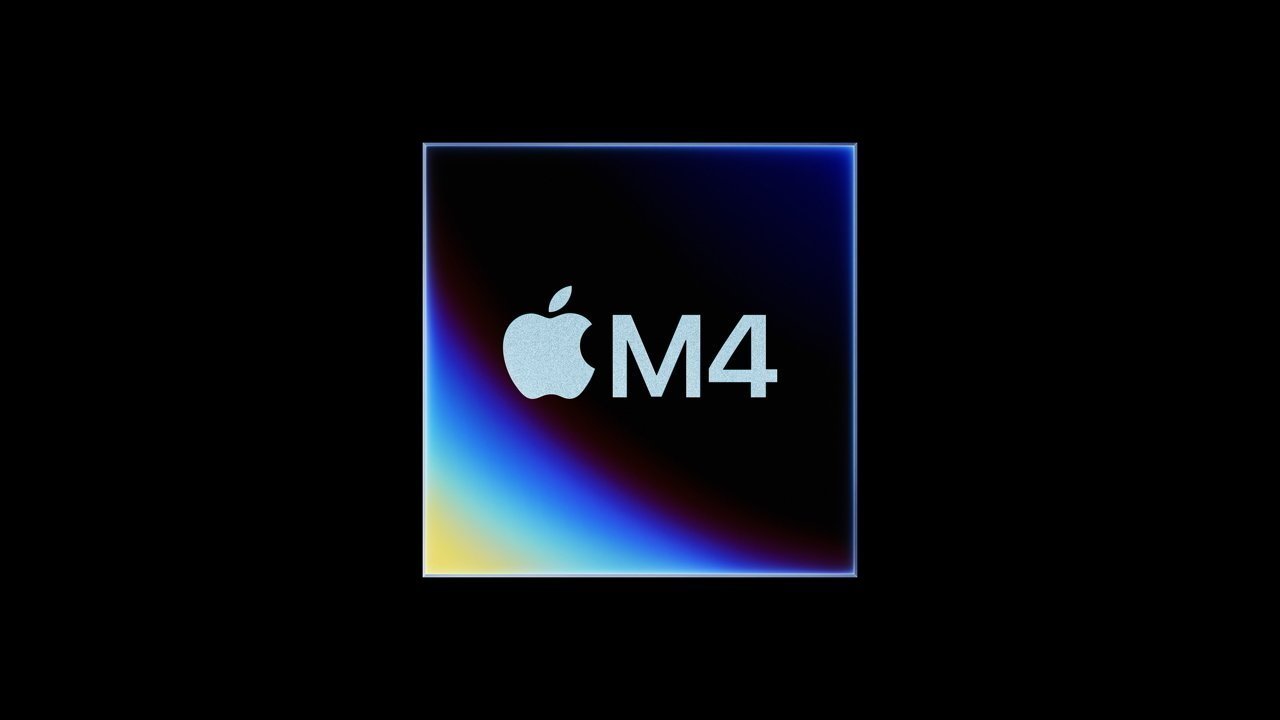 M4 logo – Image credit: Apple
M4 logo – Image credit: Apple
For Apple, this gives it a vested interest in upgrading the iPad’s chip to the A17 Pro. This would effectively make the iPad the lowest barrier to entry for users to actually use Apple Intelligence across Apple’s entire hardware catalog.
A chip update is certainly expected for the iPad with any upgrade, and with a years-long gap between refreshes, Apple can afford to skip a few chip generations. Apple Silicon support is too important for it not to do so.
For the iPad Air, the current generation is running on the M2 chip, two generations behind the iPad Pro on M4.
While there is the opportunity for Apple to use M3 in the iPad Air, to preseve the iPad Pro’s performance advantage, it may go one step beyond.
The January 7 rumors point towards Apple potentially going for the M4 in the iPad Air. The logic behind that claim is that Apple could use it to portend the arrival of the M5 chip in the iPad Pro, supposedly due in the fall.
Regardless of whether Apple gives the iPad Pro breathing space by going for the M3 or goes straight for the M4, the iPad Air line should get a sizable performance boost.
iPad and iPad Air: Display
Of the other components used in its tablets, the display is arguably the most important, alongside the processing capabilities. While there are no rumors relating to the iPad’s display for the next generation, there certainly are for the iPad Air.
In November, a sketchy rumor claimed that Apple will upgrade the display in the iPad Air. Instead of a 60Hz panel, Apple could instead opt for a 90Hz version.
This update would theoretically go alongside updates to the 24-inch iMac and a new Apple Studio Display.
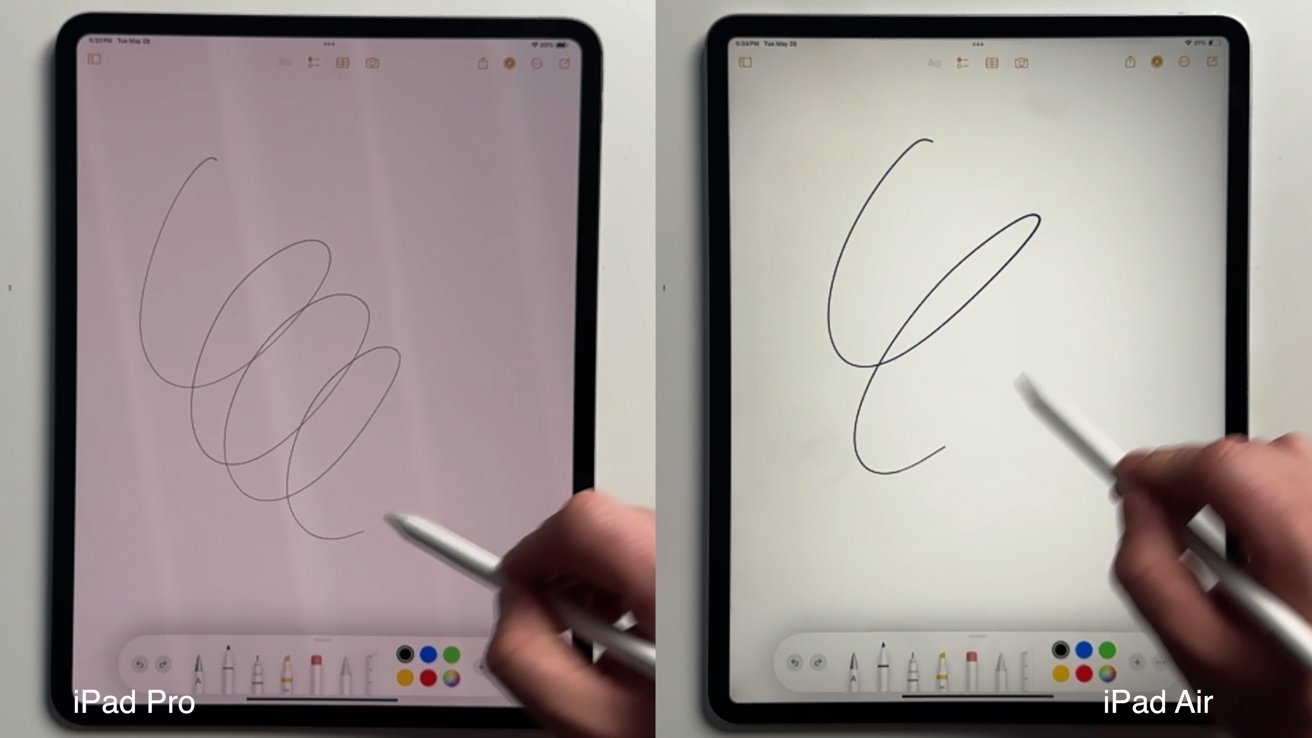 Higher refresh rates give the iPad Pro an advantage for artists over the iPad Air
Higher refresh rates give the iPad Pro an advantage for artists over the iPad Air
However, the rumor came from an anonymous source, so there’s no track record. There’s also no background to the claims either, which makes the rumor far less likely.
There’s also the oddity of the use of a 90Hz display. Apple has used 120Hz displays in the iPad Pro, so it could be expected for it to reuse the technologies from those panels instead of expending resources to make a new panel. One that’s not quite as good either.
The other predominant rumor about the iPad Air display is that it could eventually make the move to OLED. One August 2024 report insisted that Samsung Display would be the chief supplier of OLED panels for the iPad Air.
However, this rumor relates to a potential release in 2026, not 2025. That’s an entire year, and one generation, further into the future.
The bottom line here is that a display update could happen to the iPad and iPad Air, but it’s unlikely and there are no rumors helping the cause.
iPad and iPad Air: Magic Keyboard
The last item to be rumored about for the next batch of iPads is actually about an accessory. The Magic Keyboard is anticipated to have another update, following its changes in May 2024 to coincide with the new models.
The latest version for the iPad Pro added an aluminum palm rest as well as a function row above the number row. This provided typical functions like brightness changes, media and volume control, and an Escape key.
The January 12 report said that the Magic Keyboard for the inbound iPad models would have a row of function keys.
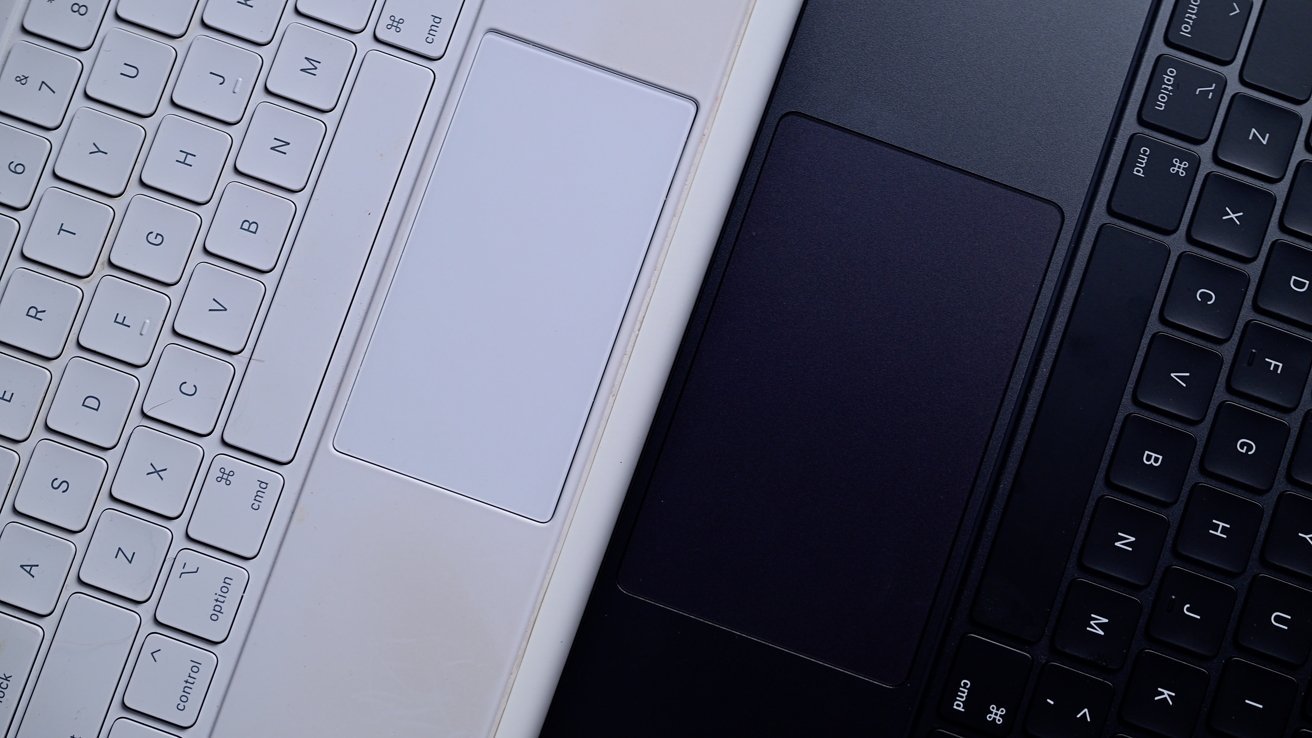 Magic Keyboard changes could be on the way
Magic Keyboard changes could be on the way
This, again, makes sense for the iPad Air, since the version of the Magic Keyboard practically reuses the old iPad Magic Keyboard design. Shifting to match the design of the current iPad Pro Magic Keyboard would add features with little real effort on Apple’s part.
However, the wording of the report says there will be “lower-tier iPad Magic Keyboards” with codenames R307 and R308.
This is somewhat confusing, as you could theoretically interpret it two ways. The report could mean the iPad Air versions of the Magic Keyboard are “lower-tier” editions, or it could be Magic Keyboards intended for the base-level iPad.
Clarifying things is another Bloomberg report from September 2024, which claimed a “low-end” iPad version of the Magic Keyboard was in development, destined for a middle-of-2025 release.
One thing going against the rumor is the probable cost to consumers. The price of the iPad Air Magic Keyboard is $299, while the current 10th-gen iPad is $349 in its base configuration, making the Magic Keyboard seem quite expensive.
Of course, for a base model iPad, you could expect Apple to reduce the cost in some way. This probably won’t be much, if you consider that the Magic Keyboards for the iPad Pro and iPad Air are identically priced.
But, then again, the Magic Keyboard is a bit of a status symbol. That may actually be a price that some consumers are willing to pay.




